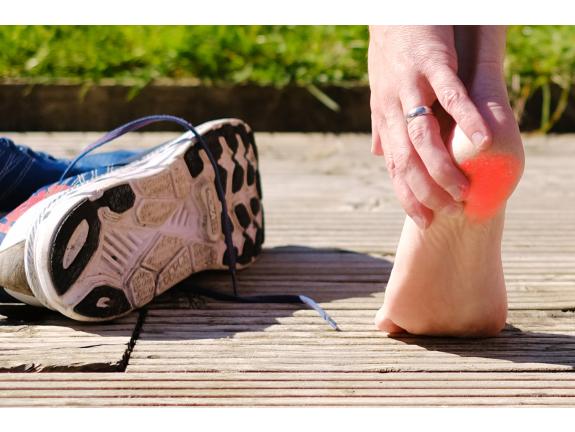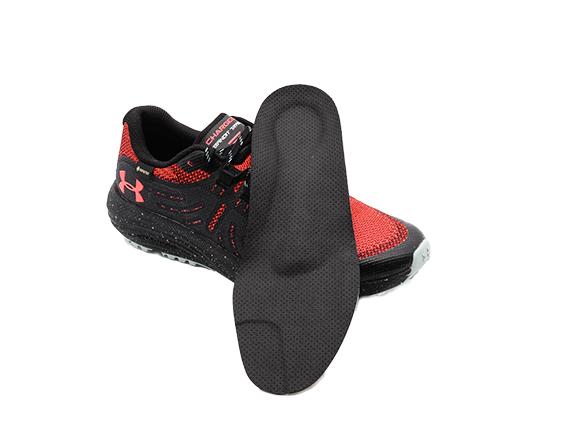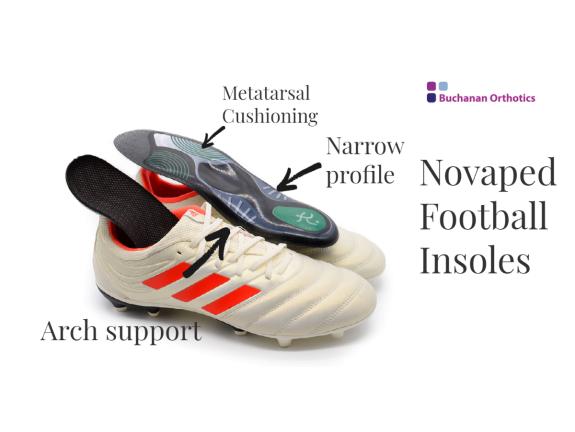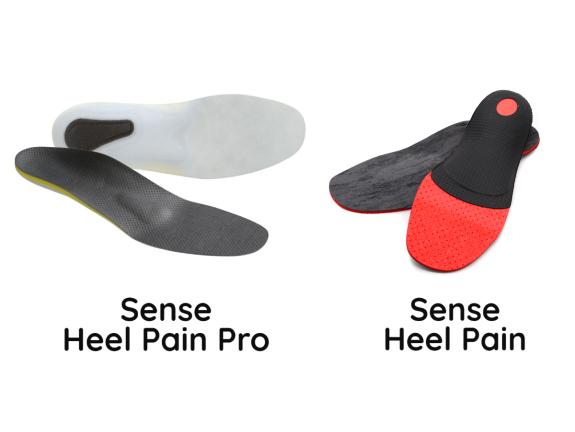Plantar Heel Pain treatment options
In this article
- Introduction
- Symptoms
- Assessment Findings
- Orthotic Treatment
- Prefabricated Insole options
- S90 Heel Spur
- Novatherm
- Carbon Hallux Calca with U-pad
- Novaped Sports
- Novaped Protect Carbon
- Sense Heel Pain and Heel Pain Pro
- Differential diagnosis
- Do you treat Plantar fasciitis privately?
Introduction
Plantar heel pain or Plantarfasciitis is a commonly presenting condition to podiatrists, orthotists and physiotherapists. It has been suggested that 1 in 10 people will have some form of plantar heel pain in their lives and is more prevalent in people aged 40-60.

It had previously been thought that Plantar Fasciitis involved chronic inflammation; however, more recent studies have concluded this is not the case. We will often refer to it as Plantar Heel pain. That is a more accurate description as the ’itis’ refers to inflammation of the plantar fascia that is not now thought to be present.
Due to the difficulties of accurately diagnosing and addressing plantar heel pain, there is currently no evidence to define a standard treatment or even treatment of choice. The Cochrane review of plantar heel pain published in 2009 by Crawford & Thomson found limited evidence regarding treatments. The author's conclusions summed up that:
“At the moment there is limited evidence upon which to base clinical practice.”
That review has not been updated and has been withdrawn due to being significantly out of date.
Symptoms
- Initial insidious onset of pain.
- Pain during the first steps after rest and first thing in the morning
- Pain that reduces with activity but worsens later during the day
- Pain after periods of standing or walking

Assessment Findings
- Tenderness on palpation of the plantar heel area
- Limited ankle dorsiflexion range (with the knee in extension).
- Pain with initiation fo the windlass mechanism with pain on extension of the first metatarsophalangeal joint
- An antalgic gait
It has been suggested that pain-related fear of movement is the most potent contributor to disability with plantar heel pain.
Orthotic Treatment
When considering foot orthoses, the design aspects of foot orthoses will need to consider many factors such as; limitation of pronation, reducing the stress in the plantar fascia, reducing the irritation of a specific band etc. While this will vary from person to person, there will be a few common prescription variables with no defined common prescription.
- If the aim is to reduce subtalar pronation, additions such as medial wedging and support to the arch would be needed.
- Heel skives can be used. However, caution is needed as it may press on a tender point at the plantar fascia insertion.
- A plantar fascia groove can be used to relieve an irritable plantar band.
- Forefoot wedges have been studied to reduce stress in the plantar fascia. In his paper, Kogler (1999) studied the effect of various combinations of hindfoot and forefoot wedging.
- In his study, he concluded that a lateral forefoot wedge increased the load on the lateral side of the foot, stiffening the calcaneal cuboid joint and reducing the tension in the plantar fascia.
- A number of studies suggest the use of stock insoles to start with due to the price, then progressing to custom if the stock insoles are unsuccessful.
In a recent review in the BJSM, it is stated state:
'Given the contrast with custom orthoses, it may be that having a range of prefabricated orthoses may be a suitable strategy so that prescription can be individualised. This approach would be a priority for future cost-effectiveness trials, given the lower cost compared with casting or scanning.'

The plantar fascia is the thick connective tissue that supports the arch on the underside of the foot. As it runs from the tuberosity of the calcaneus anteriorly, it fans out to attach to the proximal phalanges of the toes.
The plantar fascia is made up of predominantly longitudinally oriented collagen fibres. There are three distinct structural components, with the central being the largest and most prominent.
One function of the plantar fascia is to help make the foot rigid at push off during gait. The process is referred to as the Windlass Mechanism and is shown above.
Prefabricated Insole options
All the prefabricated insoles below can be adapted with wedging by either our skilled technicians or chairside.
S90 Heel Spur
The S90 Heel spur insole is a classic insole that is a great first-line intervention to reduce the heel and plantar fascia load.
- Composite base
- Plantarfascia cut out infilled with cushioning
- PU foam mid layer
- Easy clean Vinyl top cover
- Medium and wide
- Size 35-48 UK 3 – 13
- With or Without a Met dome
Novatherm
The Novatherm, while not as cushioned as the S90 heel spur, its thermal properties can prove beneficial. It is also smaller in profile when compared to the S90 heel pain.
- Thermoplastic Base
- Plantar fascia cut out
- Thermal Top cover to retain heat
- Size 35-48 UK 3 – 13
- With our Without a Met dome
Carbon Hallux Calca with U-pad
The Carbon Hallux Calca with U-pad includes a carbon Mortons extension to assist in limiting forces acting on the 1st metatarsal phlangeal joint for patients with heel pain and hallux limitus.
- Prepreg carbon fibre construction
- long carbon spring
- For treatment of hallux rigidus and calcaneal spur
- Microfibre on Dry top cover
- ARUfoam heel pad

Novaped Sports
The well-regarded Novaped Sports insoles come pre-designed for a range of sports. With sports-specific insoles for football, running and golf, they are designed to fit into the footwear typically worn for these activities. All Novaped Sports insoles include a plantar fascia and heel cut-out. They are easily adaptable chairside or by our technicians prior to dispatch.
The Football insole is our recommendation for use in football or any sport that uses narrow boots. The fitting of insoles in football boots can prove difficult due to the narrow nature of the waist of the boot and limited forefoot depth.

Novaped Protect Carbon
The Novaped Protect Carbon insoles are designed to be worn in safety footwear without preventing the boot from meeting the relevant safety standards. They can be ordered individually or to fit with Schein's range of safety footwear.
- Supporting carbon insole blank
- Carbon technology substructure
- Forefoot perforation
- Notch at heel and base of plantar fascia with PU padding
- Integrated PU heel cushioning
- Long-sole padding
- Conductive padding material
- Padded cover
- Anatomically shaped foam rubber pad
- Microfibre cover
- ESD-conductive
- Adjustable
- Lightweight
Sense Heel Pain and Heel Pain Pro
Sense Modular Insoles are a good first option to provide relief without requiring fully custom insoles. The ability to add wedging while preserving the heel cut-out and plantar fascia groove allows customisation to the person.
With the Sense range, you can select additions such as hind and forefoot wedging, mid-layer and top cover.
There are two options in the Sense Range for the treatment of heel pain. We have the Classic Red Sense Heel Pain and the Heel Pain Pro.

Differential diagnosis
Plantar Fasciitis is seen as the most common cause of plantar heel pain but there are also a number of differential diagnoses, which can be easily missed. These include:
- Lateral Plantar Nerve Entrapment
- Baxters Nerve
- Tarsal Tunnel Syndrome
- Plantar Fibromatosis
- Calcaneal Stress Fracture
- Bone Tumor
- Compartment Syndrome
- Bursitis





